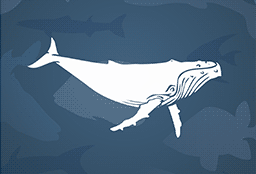Tiny, plain grey-brown and whitish wader with black legs and straight, gently tapering black bill, slightly swollen at tip. Shadowy dark line from bill through eye separates small white area over bill and subtle whitish eyebrow from whitish throat. Upperparts are grey-brown. Underparts are whitish with grey-brown zone on sides of upperbreast.
Size
13 – 16 cm
A medium-sized marine snail (mollusc). They are grey or off-white in colour, with 5 - 6 distinctive ridges spiralling up towards a sharp tip (apex).
Size
25 - 50 mm
Field Guide
Improve your identification skills. Download your Ribbed Top Shell guide here!
Its genus name Banksia is named after Sir Joseph Banks, a British explorer and naturalist, and its species name marginata is from the Latin 'marginatus' meaning bordered, referring to the recurved leaf edges.
A variable species that occurs as a shrub, a flat-lying plant, or a tree, with smooth brown-grey bark. Grows up to 2 m high and wide as a shrub, less than 1 m as a flat-lying plant, and between 5 – 12 m as a tree.
Leaves
Green on the upper surface and silvery underneath. Each leaf is linear to oblong-shaped, 1 – 8 cm long, 3 – 13 mm wide, and has finely-toothed edges. The edges are recurved (rolled under) and may have small serrations, and their tip can be blunt or squared.
Flowers
Pale yellow cylindrical spikes forming a bottle-brush shape. Each flower head is 5 – 10 cm long and 4 – 6 cm wide and attracts nectar-eating birds.
Fruit/seed:
The name ‘right whale’ was given to them by early European whalers who thought they were the ‘right’ type of whale to hunt. Their slow moving nature made them easy targets and their blubber was of high quality. They also floated when dead, making them much easier to move to shore.
Generally black with small patches of white on the belly and lacking a dorsal fin. They have a rounded head and short, spatula shaped flippers with a distinctive V shaped blow.
Distinctive feature
They have numerous, pale coloured callosities around the head.
A large jellyfish with a rounded bell shape that is clear or tinted brown or yellow. The bell has many obvious small white crystalline spots close to the surface that are evenly distributed.
The tentacles are located in the centre of the bell, with 8 individual arms visible. Two sets of tentacles are visible: one is short, fleshy (cauliflower-like) and the other is longer, clear to white (rope-like) and extend beyond the shorter fleshy tentacles. The longer tentacles also have white spots on their ends.
They are called Surf Barnacles because they prefer to live in areas of medium to high energy wave action.
Small invertebrates that live inside hard circular or pyramid-like structures made from calcium-carbonate. They have eight main side plates, surrounded by many smaller ones, giving them a scaly appearance and are usually grey with a greenish tinge.
Size
20 mm high, 25-30 mm diameter.
Field Guide
Improve your identification skills. Download your Surf Barnacle guide here!
A small green seaweed. It has dark round, forked fronds (branches) with a fuzzy appearance and a velvety or sponged texture.
Size
Up to 30 cm long.
Field Guide
Improve your identification skills. Download your Velvet Weed guide here!
Medium marine snails (molluscs) that float around in the open ocean. They have a purple shell that lightens in colour as you move towards the flattened top of the shell. The shell itself is very light weight and they have no operculum (lid). Their flesh is a dark purple or sometime black.
They float around the open oceans upside down, attached to a raft of mucus bubbles that they make.
Size
Up to 30 mm
Flower-like invertebrate that has many long tentacles surrounding a central mouthpart which is attached to a hard surface. These specialised fighting tentacles come from the acontia, which appear as white spots on the top of the column. At low tide or when disturbed, the tentacles retract and the anemone looks like a round blob of jelly. They range in colour from bright red, reddish-brown to dark purple.
Their tentacles contain hundreds of stinging cells called ‘nematocysts’ which the anemone uses to sting and immobilize their prey, and to do battle with other unrelated anemones. These are the same cells that give Blue Bottles their sting although most anemone species cannot penetrate human skin.
Metallic blue-black on top and light to dark grey on its breast and belly. Its forehead, throat and upper breast are rust in colour. It has grey legs and feet, and its eyes and bill are black. A young Welcome Swallow has shorter tail feathers than an adult and its forehead and throat are a creamy beige (instead of rust).
Distinctive feature
A deeply forked tail with a white band or row of spots on the long tail feathers.
A medium-sized black and white honeyeater. It has large bright yellow tail and wing panels, with a large conspicuous white cheek patch on a mainly black head. Young birds are duller with brownish plumage.
Size
16-18 cm
Mostly light blue-grey in colour. The forehead, crown, chin and upper throat are white. It has a long, slim neck and a pointed grey-black bill. The legs are long and dull yellow in colour. Easily identifiable when seen from below with the dark flight feathers of the wing contrasting with the paler grey plumage.
Males and females are similar. When breeding, the birds have long feathers (nuptial plumes) on the head, neck and back. Young are similar in appearance to non-breeding adults, with little to no white on the face; underparts often have a reddish colour.
Distinctive feature
Its characteristic white face.



